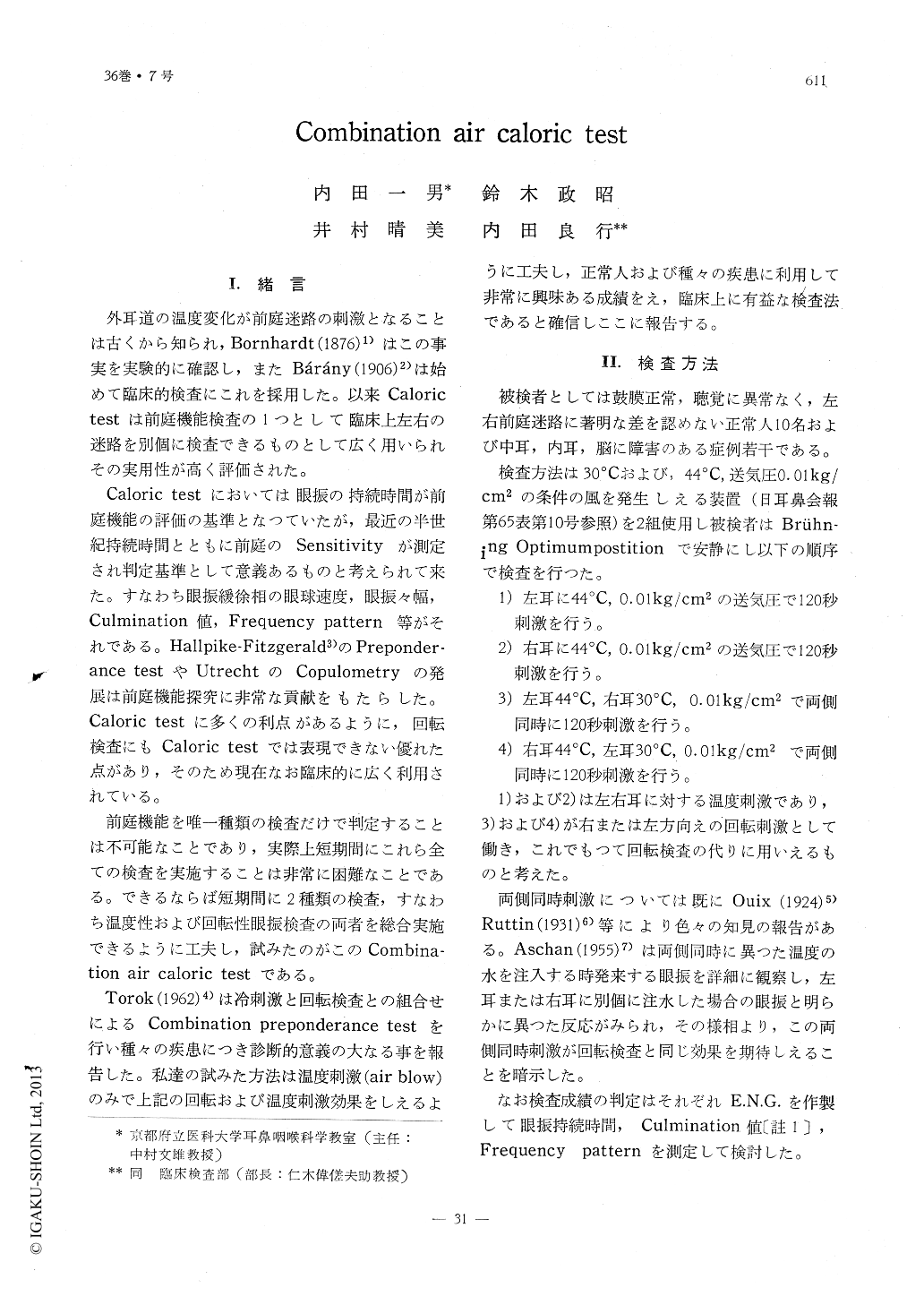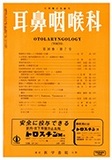Japanese
English
- 有料閲覧
- Abstract 文献概要
- 1ページ目 Look Inside
Ⅰ.緒言
外耳道の温度変化が前庭迷路の刺激となることは古くから知られ,Bornhardt(1876)1)はこの事実を実験的に確認し,またBárány(1906)2)は始めて臨床的検査にこれを採用した。以来Calorictestは前庭機能検査の1つとして臨床上左右の迷路を別個に検査できるものとして広く用いられその実用性が高く評価された。
Caloric testにおいては眼振の持続時間が前庭機能の評価の基準となつていたが,最近の半世紀持続時間とともに前庭のSensitivityが測定され判定基準として意義あるものと考えられて来た。すなわち眼振緩徐相の眼球速度,眼振々幅,Culmination値,Frequency pattern等がそれである。Hallpike-Fitzgerald3)のPreponderance testやUtrechtのCopulometryの発展は前庭機能探究に非常な貢献をもたらした。Caloric testに多くの利点があるように,回転検査にもCaloric testでは表現できない優れた点があり,そのため現在なお臨床的に広く利用されている。
A method has been devised by which the results of caloric test would be similar to that made by turning test. Both ears are irrigated simultaneously but with a different degree of hotness, one side with hotness of 30 degree and the other with 44 degrees centigrade. Reaction from these stimulations are observed. The standard of measurement of these reactions are regarded by nystagmus lasting time, culminating value and frequency pattern. In normal individuals the nystagmus. last from 180 to 220 seconds; culmination value ran from 18 to 24.
This method of testing was applied in various clinical cases, chronic otitis media, Menière's and brain tumor, and compared to the results of turning tests. The former appears to be highly valuable particularly in, tests for brain tumor.

Copyright © 1964, Igaku-Shoin Ltd. All rights reserved.


